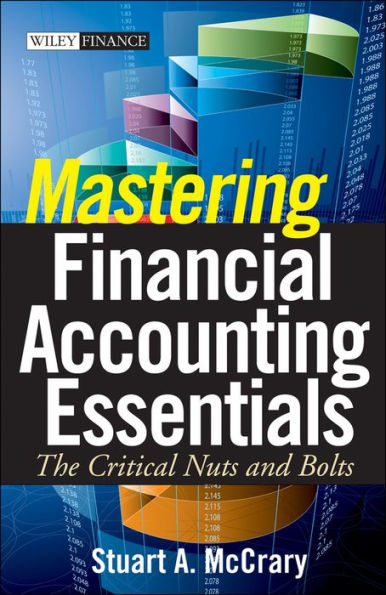Emphasizing a general understanding of the process and reports associated with this discipline, Mastering Financial Accounting Essentials shows you how to understand accounting records, use accounting information intelligently, and reduce the opportunity for fraud. This book does not focus on accounting and auditing rules and is not intended to teach accounting to future accountants—nor does it assume any prior knowledge of accounting jargon or double-entry accounting. Instead, it focuses on a intuitive understanding of the accounting process and standard accounting reports through an extended example of a new company being created.
As the example company is built and grows, new kinds of activities require accountants to record a widening variety of business transactions. It starts with a limited accounting system that does not include many key features of modern accounting, and then features—such as accrual accounting, which can make accounting numbers more useful for business decisions—are successively added, so that you can gain an understanding of how they work and why they are used.
All accounting concepts are introduced along with the language accountants use to describe the process. The name of a particular account is written in upper case (such as ASSETS or CASH) to make it clear when the text describes that account. The book reinforces the new language by gradually adopting accounting vocabulary. In this way, you will learn about accounting without having to have a grounding in the topic—and will then get to rehearse the language used by accountants. Questions at the end of each chapter revisit key concepts by reviewing how accountants handle common business transactions.
For all non-accountants who need to master the fundamentals of accounting language and concepts, Mastering Financial Accounting Essentials will prove to be a vital hands-on guide.
Emphasizing a general understanding of the process and reports associated with this discipline, Mastering Financial Accounting Essentials shows you how to understand accounting records, use accounting information intelligently, and reduce the opportunity for fraud. This book does not focus on accounting and auditing rules and is not intended to teach accounting to future accountants—nor does it assume any prior knowledge of accounting jargon or double-entry accounting. Instead, it focuses on a intuitive understanding of the accounting process and standard accounting reports through an extended example of a new company being created.
As the example company is built and grows, new kinds of activities require accountants to record a widening variety of business transactions. It starts with a limited accounting system that does not include many key features of modern accounting, and then features—such as accrual accounting, which can make accounting numbers more useful for business decisions—are successively added, so that you can gain an understanding of how they work and why they are used.
All accounting concepts are introduced along with the language accountants use to describe the process. The name of a particular account is written in upper case (such as ASSETS or CASH) to make it clear when the text describes that account. The book reinforces the new language by gradually adopting accounting vocabulary. In this way, you will learn about accounting without having to have a grounding in the topic—and will then get to rehearse the language used by accountants. Questions at the end of each chapter revisit key concepts by reviewing how accountants handle common business transactions.
For all non-accountants who need to master the fundamentals of accounting language and concepts, Mastering Financial Accounting Essentials will prove to be a vital hands-on guide.

Mastering Financial Accounting Essentials: The Critical Nuts and Bolts
176
Mastering Financial Accounting Essentials: The Critical Nuts and Bolts
176Related collections and offers

Product Details
| ISBN-13: | 9780470549568 |
|---|---|
| Publisher: | Wiley |
| Publication date: | 09/25/2009 |
| Series: | Wiley Finance , #485 |
| Sold by: | JOHN WILEY & SONS |
| Format: | eBook |
| Pages: | 176 |
| File size: | 3 MB |
